ATC Cartography
Face to interface
Streamlined to save time
A custom CMS helped raise the bar for this IT group.
The context
The client
The internal technology division within a Fortune 20 O&G enterprise.
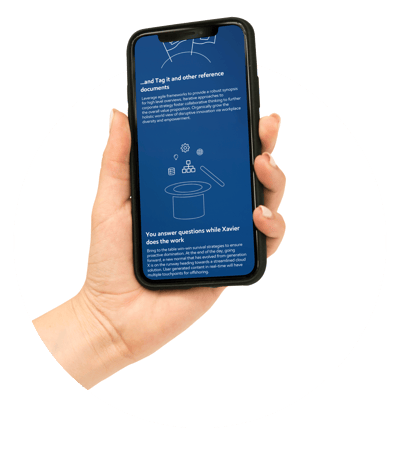
The situation
Our client was the IT provider that serviced every business line within the O&G enterprise. Each business line had its own way of operating—with vastly different processes to handle software and IT projects. With so many different standards and workflows, it was impossible to hold anyone to the same standard of excellence.
Understanding that redundant work and process inefficiencies were a huge revenue leak for them, our client decided to roll out a new initiative to help standardize their processes for application development of security, cloud, and other infrastructures.
The ask
Knowing that this initiative would overburden their team, Softway® was brought in to design a new standardization tool and help roll it out. Because this initiative would impact every business line across the entire enterprise, we needed to think big and work closely with our stakeholders to make sure the solution was viable.
Our approach
The tech side
Softway® proposed to build an interactive web portal for modern application education and guidance—the Modern Application Portal (or MAP). This hub would serve as the starting point for new or experienced solution implementers, solution engineers, business influencers, and leadership to understand their role in upholding the standardization principles and provide the practical resources to achieve them.
The human side
Softway® needed to help communicate the change and create excitement around the adoption of these modern applications. Because there would still be elements of self-teaching, we wanted to empower users to dive in and get the information they needed.
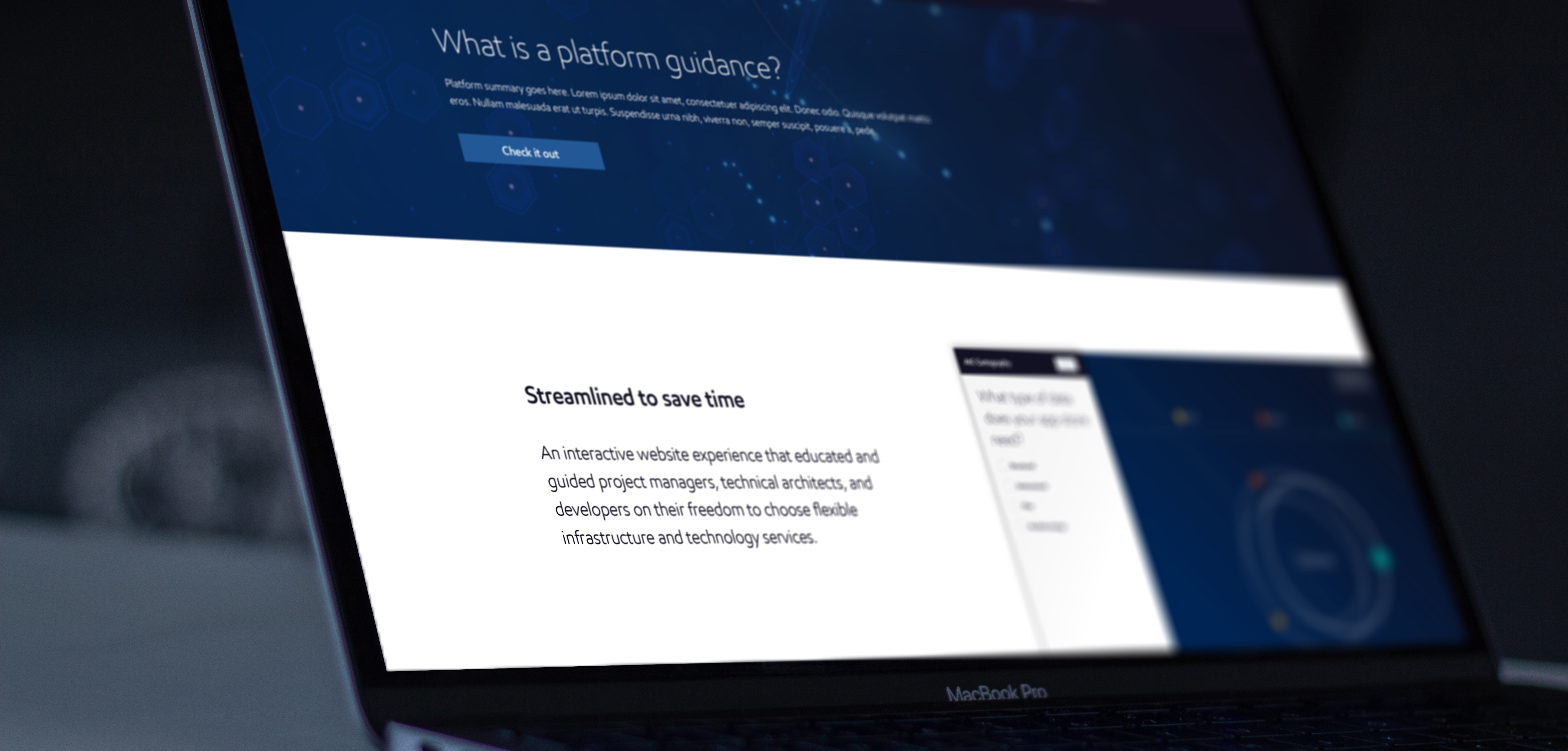
How we did it
We created a custom CMS that met users where they were—this intuitive guidance tool featured three different interfaces that would evaluate the user’s needs and recommend best practices, enterprise principles, and technology that fit their scope.
Through the three custom interfaces, everyone’s experience-level was taken into consideration, and they were provided with a standardized method to approach a project.
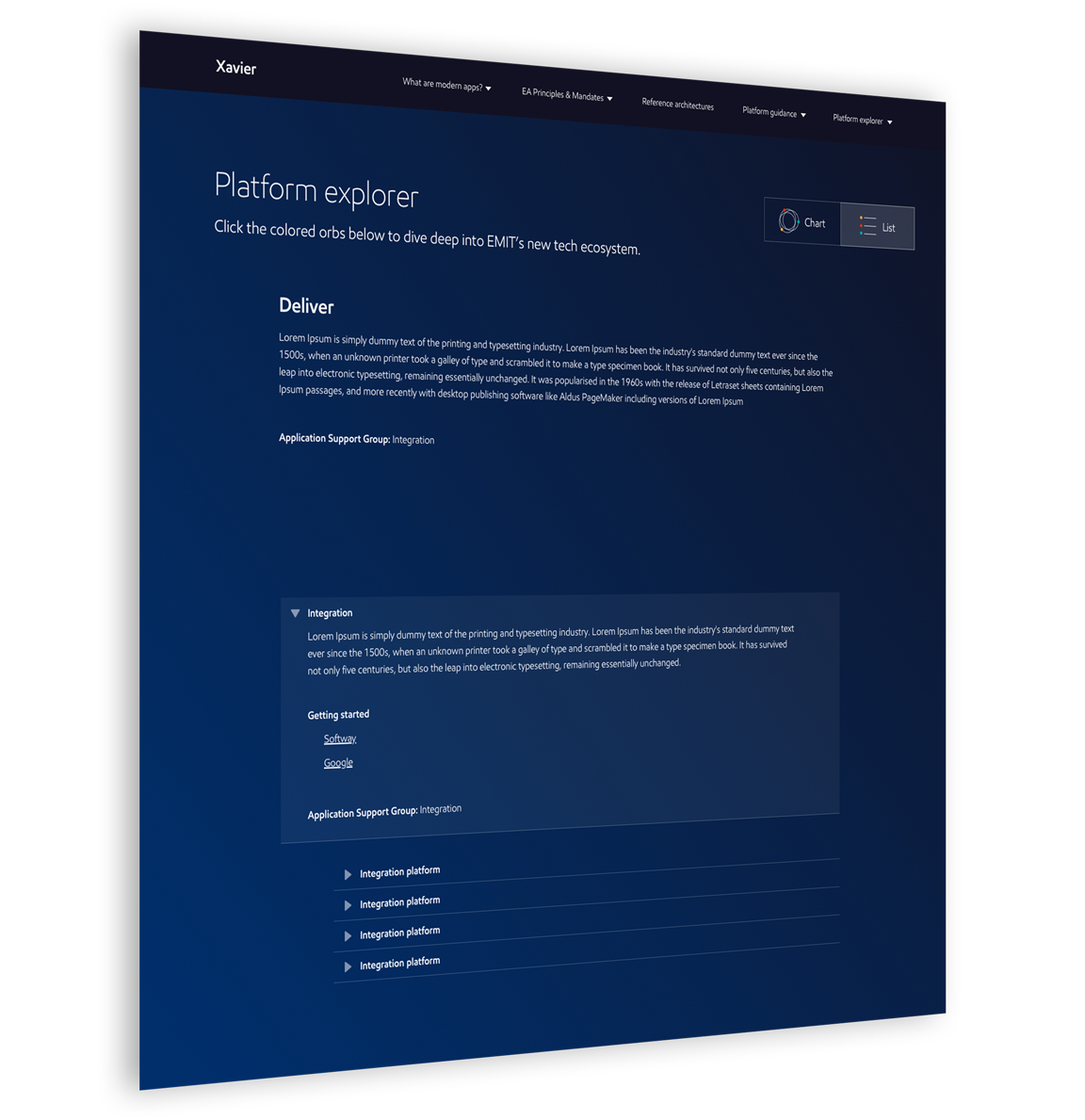
Interface 1
A listed view—laying out all the data for the user to self-select the information they needed. This was best suited for veteran implementers, engineers, and developers who knew what they were looking for.
Interface 2
A platform explorer view that provided the same data, but also included contact information for team members who could help with their particular query and other options to help get them started on their solution.
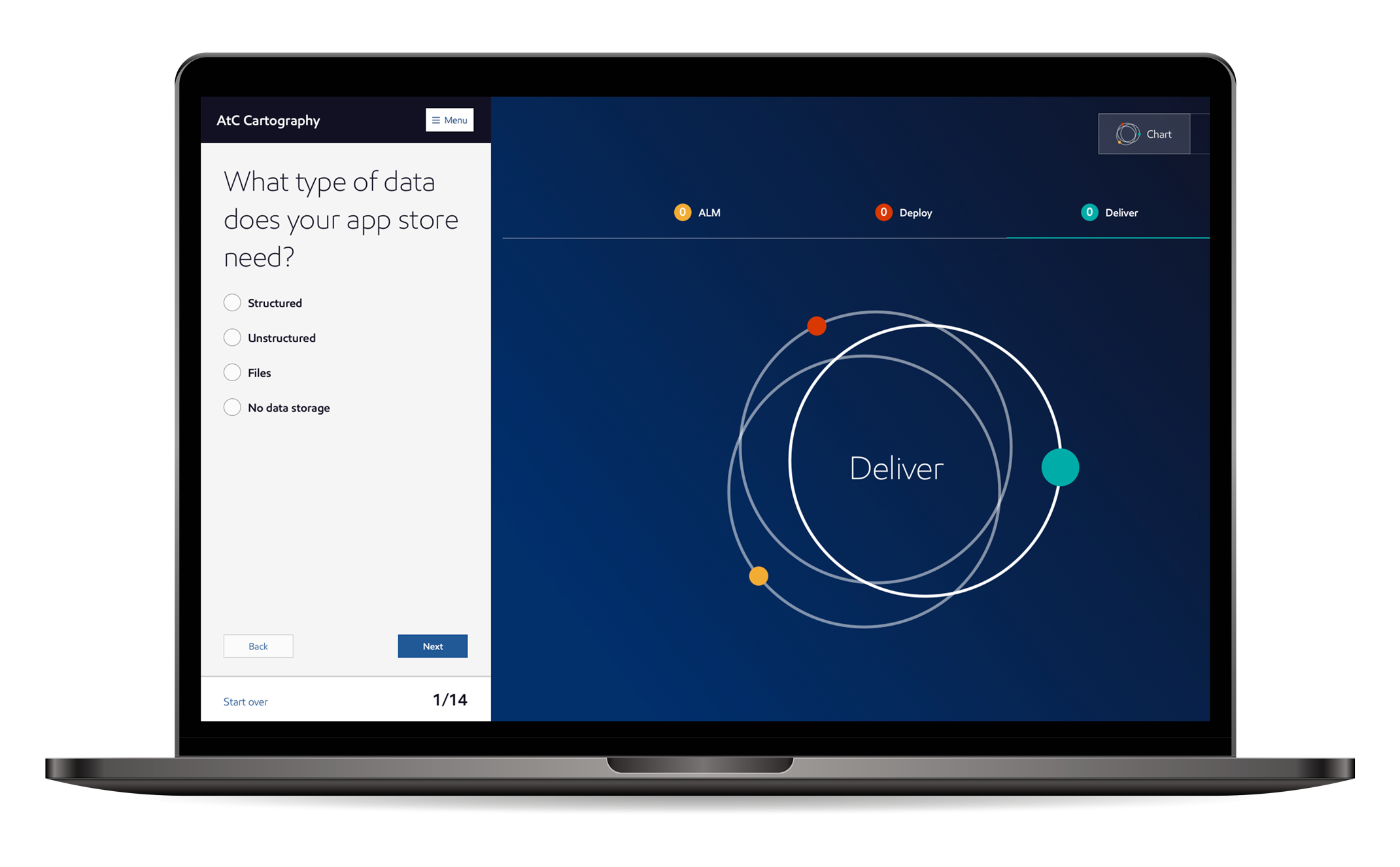
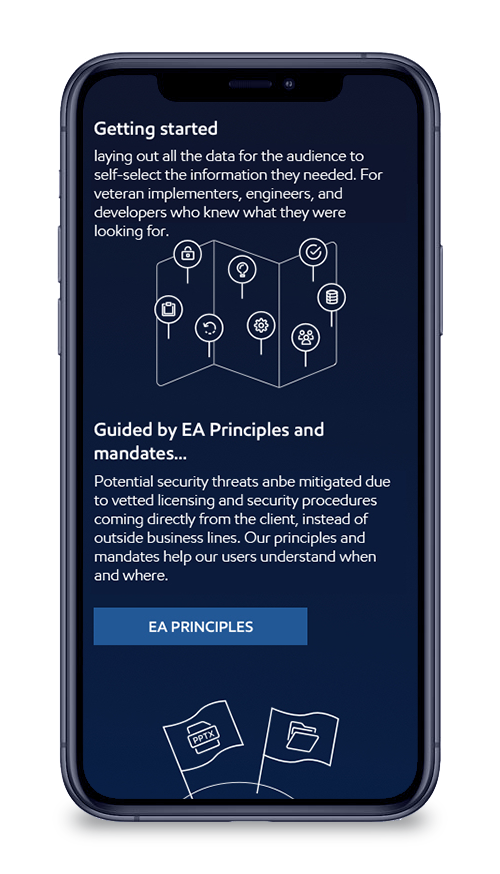
Interface 3
A walkthrough for junior employees or those less familiar with the infrastructure they were working on. We created a dynamic, logic-based questionnaire that helped filter and curate the information, tools, and team members that should be consulted for a particular solution.
Architecture
The application architecture is built with the following Azure services -Azure Ad Authentication (to help protect users and their identity information), Azure App Service (to build web apps, scalability and to support both Windows and Linux platforms), Functions Apps (to keep all the Business Logics required for the application), Azure API Management (as a gateway for the all the requests), Azure Storage (as highly durable, available, and scalable Storage service for the application), Application Insights & Azure Monitor (to track and maintain the performance of all the services used across the application), for seamless application development and functioning.
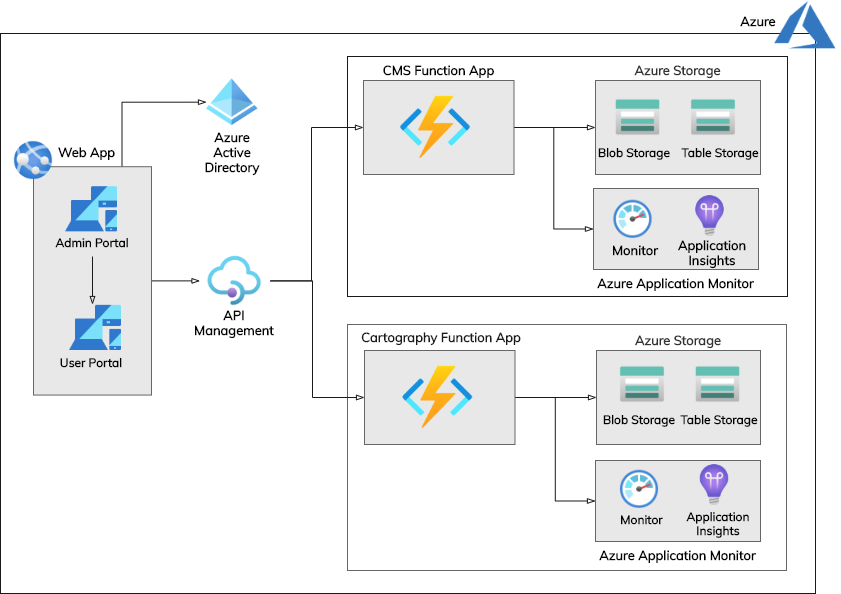
Results
A CMS that would allow our client to easily revise content and keep the site up-to-date with the latest approved processes for technology.
-
An interactive website experience that educated and guided project managers, technical architects, and developers on their freedom to choose flexible infrastructure and technology services.
-
Including best practices for these frameworks when setting up and/or executing project architectures.
-
PMs, ITBAs, and BITs from different business lines could easily share and communicate data with one another.
-
Decreased revenue leaks by minimizing the hours spent on redundant work.
-
These standards allowed for transferable data to be immediately executable.
-
Potential security threats could be mitigated due to vetted licensing and security procedures coming directly from our client, instead of outside business lines.